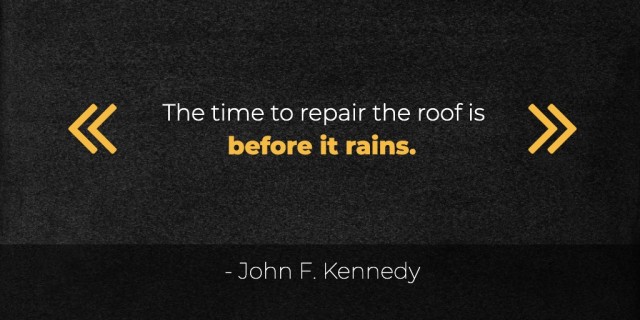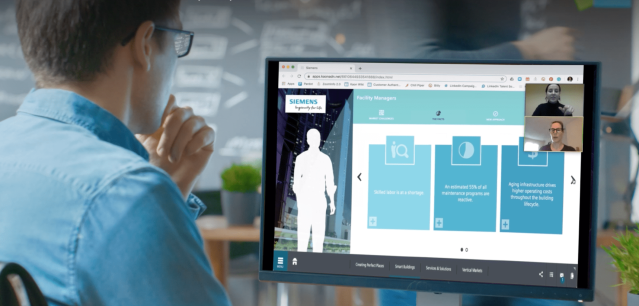 Sustaining Predictable Revenue and Customer Engagement
Sustaining Predictable Revenue and Customer Engagement
Several economists and analysts are forecasting significant global macroeconomic impacts of the Coronavirus pandemic. The UN is estimating economic costs of $1 trillion in 2020. The BBC reports that an intensified, sustained outbreak of the Coronavirus could halve global market growth this year. Unexpected economic shocks have certainly happened before, caused by a variety of factors, including natural disasters, wars, terrorism, and pandemics. In all of these cases, the majority of companies typically reduced spending, particularly affecting marketing budgets.
For marketers with any length of experience who have faced uncertain times before, this current situation may present familiar anxiety. Unusually, the particular nature of this pandemic has caused marketing event cancellations and travel bans.
For sales leaders, this disruption has led to the inability to confidently forecast opportunities in their pipelines. This uncertainty is due to a rapid and dramatic shift in their ability to meet with their prospects and customers, as well as the market pressure surrounding their customers’ spending expectations.
We need to prepare for months of an uncertain business environment ahead. What can we control when everything surrounding us is so uncertain? What can we do at an organizational level to sustain revenue growth and continue to effectively engage with customers during these unstable times?
We must maintain a focus on helping our customers solve their challenges – always delivering an understanding of how we create value, rather than what we sell. For B2B companies, we know that customer engagement is the key to conveying value, and, in particular, differentiated competitive value.
 Innovative Digital Marketing and Sales Platforms Help to Weather the Storm
Innovative Digital Marketing and Sales Platforms Help to Weather the Storm
John F. Kennedy said, “The time to repair the roof is before it rains.” This metaphor applies to how marketers and sales leaders think about digital transformation. When times are good and customers are buying, there appears to be little impetus to innovate. When unexpected disruptions occur, it often is too late to respond by changing how we do things. So, we need to be constantly finding ways to innovate how we transform our marketing and sales approach, beginning with creating a digital transformation platform for delivering experiences to prospects and customers wherever they are. Those visionary marketers and sales leaders who have pioneered digital transformation strategies in their organizations are better equipped than their competitors to manage through business uncertainties. Rather than creating disparate, one-off applications based on digitizing the process, they have sought to leverage the capabilities of digital technologies to transform the process.
Here are a few examples of tools and approaches we are seeing that help guarantee business continuity, regardless of external, uncontrollable events.
 Video Conferencing
Video Conferencing
With travel restrictions, office closures, and quarantines, it is vital to keep lines of communication open and maintain communication that is as engaging as in-person meetings. Video conferencing tools, such as Zoom meeting, have seen a sharp increase in usage since the start of the Coronavirus outbreak, and it’s safe to say that the trend will continue for the foreseeable future. As a result, most virtual collaboration providers are offering increased levels of support to current and potential customers, as well as best practices for holding virtual meetings and conferences that are as productive and engaging as in-person. The best tips we can offer from our experience are: (1) get comfortable with and always use the video feature and (2) make any content you are presenting visual-based, concise, and interactive.
Virtual Events
There is also the opportunity to hold previously in-person events online. If you are planning your organization’s annual sales kickoff or tradeshow event, Coronavirus probably is throwing a giant wrench into your plans and causing your team some panic. IBM recently announced that its annual Think! client and developer conference will take place as a global, “digital-first” event in 2020.
Local Events
Regionalized outbreaks that limit travel open the door for a more targeted approach to face-to-face events. Meet the Boss coordinates a small, localized event of your key buyers for one-on-one and small group conversations. Holding these types of events where your buyers are centrally located is one way to mitigate the impact of travel restrictions while maintaining a sense of normalcy and community.
Customer Engagement Platforms
Marketing leaders who have pioneered digital transformation strategies have invested their company’s money wisely. Visionary organizations, including AWS, Cisco, Dell Technologies, and many others, bowed out of their major trade shows and conferences this year, but their investments in interactive customer engagement solutions (many of which were targeted for initial use at these now-canceled events) were immediately available to be deployed online for virtual events. This is possible because these solutions were not one-off applications; they were built on digital transformation platforms and were designed to transcend any single event or customer venue.
The result was that these companies are crisis-ready, and they are able to seamlessly transition to virtual customer engagements without delay or additional expense. (The companies mentioned above leveraged the innovative High Velocity Marketing Platform by Kaon Interactive, which offers a powerful, multi-venue technology to enable these interactive solutions and product storytelling applications to convey crisp value differentiation messages to each constituent in the buying ecosystem.) Key digital transformation platform characteristics should include:
- Availability offline and online (on the web or native applications running offline on PCs or mobile devices)
- Device-agnosticism (mobile, tablet, PC, touch screen)
- Venue- agnosticism (website, trade show, analyst briefing, training, onboarding, sales meeting)
- Interactive 3D, augmented reality and virtual reality experiences
- Scalability and extensibility (with real-time cloud updates)
- Unlimited global users (customers, sales, marketing, channel, training)
B2B Buyers Act Like Consumers
Even before this recent crisis, B2B buyers were acting like consumers, self-servicing themselves through much of the buying journey through digital resources. The current lack of face-to-face engagement will only intensify this behavior and the need to create interactive engagement for B2B buyers. This revolution in communications is much more significant than the medium in which information is stored and transmitted, but rather it is critical to transform the process of how prospects and customers receive, internalize, and understand information. Instead of simply making digital versions of marketing and sales collateral (digitization), we need to create opportunities for customers to engage and interact (digital transformation). This is how people operate in the B2C world, and it is no longer an option for B2B companies who must build a customer-centric ethos across the entire enterprise.
While companies have been focused on the digital transformation of their back-end processes, the way enterprises engage with customers has largely remained stagnant. Salespeople talk from slide presentations, send videos and brochures via email, and expect customers to understand and retain increasingly complex information.
Companies like IBM and NetApp are finding they now have a leg-up during market uncertainty, due to their early investment in digital transformation solutions. With the use of interactive digital experiences, they have positioned their sales and marketing teams to communicate their differentiated competitive value everywhere their buyers are – whether they are online or offline and independent of whether their sales or marketing team is physically present.
Failing to Plan is Planning to Fail
As marketers, we can’t control the market, but we control what we do in it. Market uncertainty will continue to change our businesses and society in important ways. These challenges expose organizational weaknesses, presenting opportunities for improvement and ongoing growth. Marketing leaders MUST take this opportunity to pioneer change and amplify their digital transformation efforts. Creating transformative customer engagement strategies will allow companies to clearly communicate their differentiated value, develop sustainable and predictable revenue streams, and provide a true competitive advantage in uncertain times – coming out stronger when the storm clears. We can’t go back to the old way of doing things… or continue to operate as we have. We need to change, starting TODAY.

